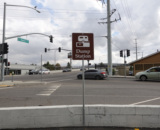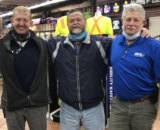Ira Wexler/NATSO
During my Profitable Retail Program visits, I am always asked about SKU rationalization and questions about why "less is more." Recently, Chain Store Weekly published an article that should hit home for many of our industry's members. As I thought it was a perfect article to pass on, an excerpt of the article is below.
Although the article is specifically speaking about department stores, many truckstops and travel plazas are mini department stores. Thus, the article is perfect. Much of what I teach during Profitable Retail Program visits today is knowing who your customer really is and speaking to them via your product presentation, positioning, and selection. While less is not always more for every operation, derentiation also comes through provding what your customer needs versus just having a store full of product to sell.
Be sure to check out the entire article here.
The fundamental reason consumers have evolved their expectations and behaviors is simply because they can. As we discovered doing our research forThe New Rules of Retail, the overstuffed U.S. economy provides an unprecedented number of choices for consumers. For example, we estimated that in 1980 there were six major blue jeans brands; today, there are over 800 and the number is growing. The ever-increasing number of choices has caused the consumer to become commensurately more savvy and demanding about what’s presented to her. We also identified a major consumer shift that describes this phenomenon: from conformity to customization. Consumers today, instead of buying the cool denim brand all their friends were wearing in the 60’s and 70’s, pursue the one special, just-for-them brand out of the 800-plus available.
Today’s consumer is responding to smaller, boutique-style stores and websites with the “best” options smartly aggregated for her. Retailers need to become stage set designers, curators, gallerists, magicians – and not just at holiday time, but all the time and across all channels. Specialists, with their simpler models, are strategically better positioned to provide this environment. The specialty model is also better suited to providing convenience, ease of shopping and an experience commensurate with its brand image.
Conversely, the one-size-fits-all department store shopping experience is no longer the draw it used to be. Selling to the customer’s needs is about conferring a lifestyle, telling a story – a story of the life that the customer would like to live. And the department store, with a few notable exceptions and some upstarts, is missing the boat on that boutique shopping experience. The sheer enormity of product and brand choices hobbles department stores’ ability to provide ease of shopping, much less a meaningful experience."
Subscribe to Updates
NATSO provides a breadth of information created to strengthen travel plazas’ ability to meet the needs of the travelling public in an age of disruption. This includes knowledge filled blog posts, articles and publications. If you would like to receive a digest of blog post and articles directly in your inbox, please provide your name, email and the frequency of the updates you want to receive the email digest.


